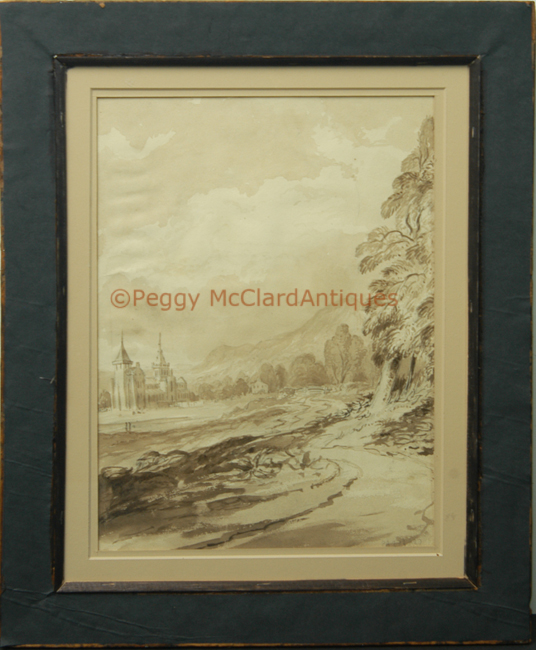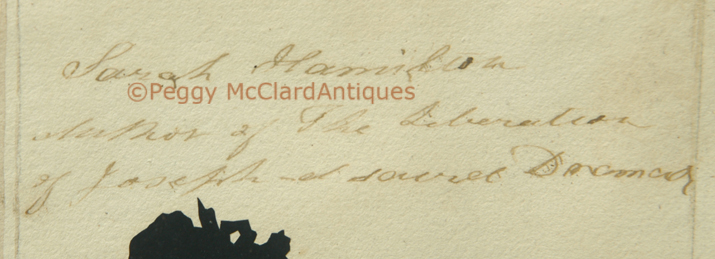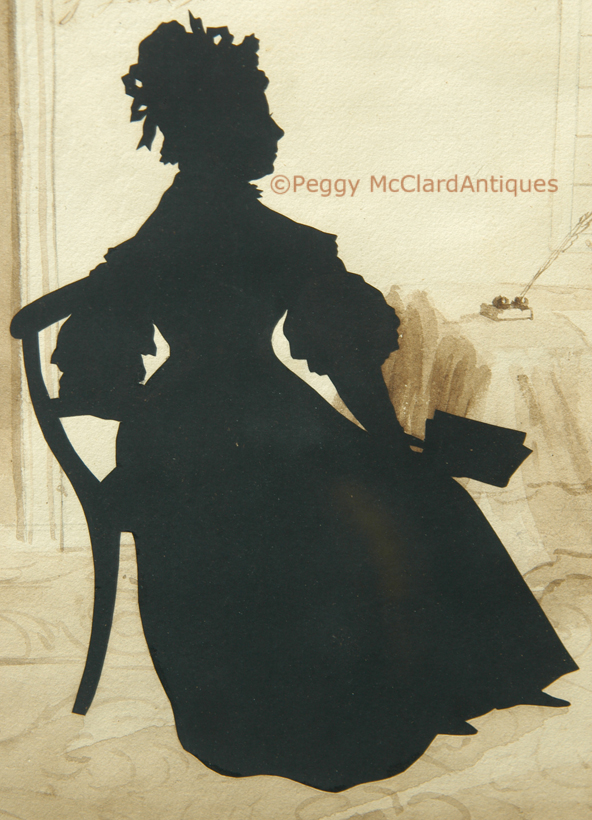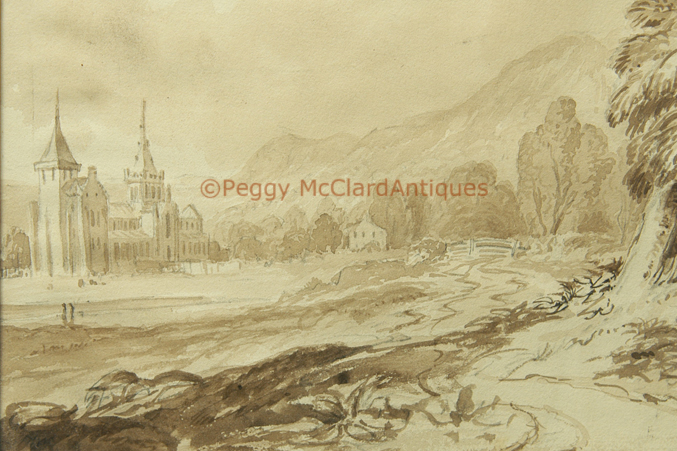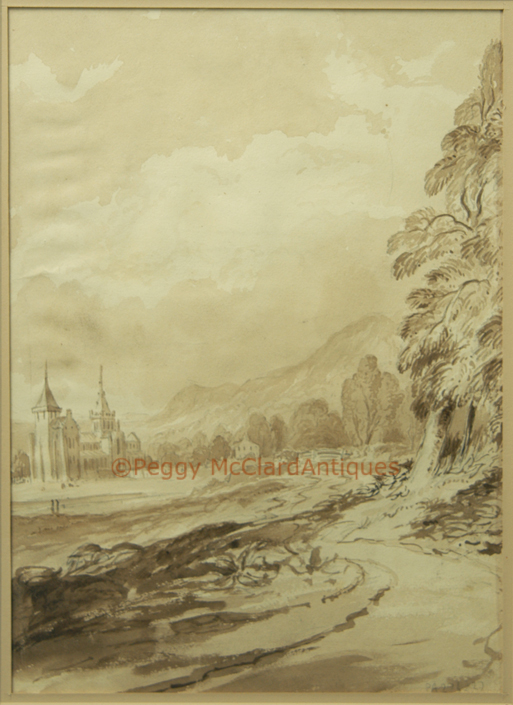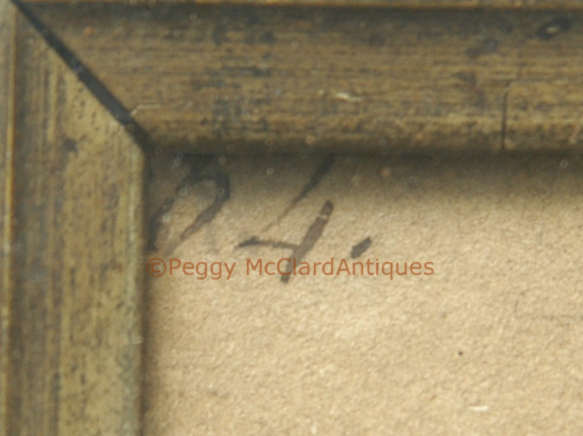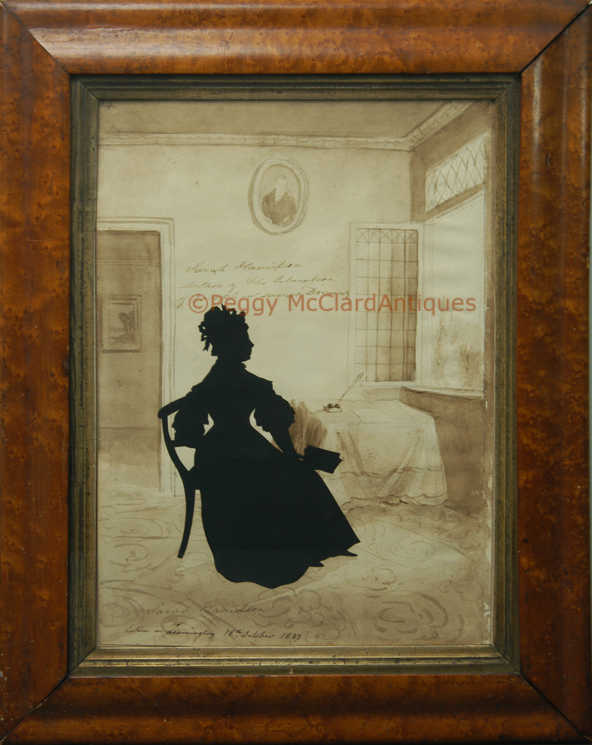
I am so pleased to offer 4 of what I consider ground-breaking silhouettes from one of Edouart’s “finished” folios. In 1923 a folio was sold by E.F. Bonaventure Inc, of New York to Miss Sarah C. Hewitt and referred to as “1 Vol. Silhouettes of eminent Americans by Edouart.” Bonaventure supposedly acquired the folio in Paris, but no clear records support that. The American folio includes single-sided pages of lithograph or watercolor backgrounds on which Edouart pasted figures of important Americans. Within that folio, Edouart had most of his sitters autograph the background on which the figure was pasted. He also usually included the date and place of titles along with descriptive titles of the sitters. The American folio is in the collection of the National Portrait Gallery in Washington DC. and is the focus on Auguste Edouart’s Silhouettes of Eminent Americans 1839 1844, Andrew Oliver, Published for the National Portrait Gallery, Smithsonian Institution by the University Press of Virginia, Charlottesville, 1977. Recently, another finished folio came up for auction. It contained important Irish figures--all subjects in the folio were men. The backgrounds were mostly lithographs with a few watercolor backgrounds. An 1838 advertisement by Edouart refers to “His Belfast Book of Public Characters”. Among other things, the ad reads, "His Belfast Book of Public Characters is likewise very interesting, by the correct delineations of the features, attitudes, and natural expression of our most distinguished personables who have honoured him with a sitting." Belfast News-Letter, Friday 23 November 1838. It seems clear that Edouart kept fully finished folios of distinguished citizens of places that he visited for marketing reasons. What better way to market your abilities as an artist than to present stunning folios gathering the most important people who have sat for you and presenting them on fully furnished backgrounds? These folios must have been very impressive to the people who flocked to Edouart’s arranged galleries throughout the British Isles and America.
Now, these four double-sided silhouettes with watercolor backgrounds indicate another “finished” folio by Edouart. Unfortunately, at this time, the only provenance we have for these silhouettes prior to 2014 is that the came from a private collection and had previously been purchased from David Ker Fine Art in London, probably during the 1980s. They came to me very recently from England and do not appear to have ever been framed. With the exception of the page with Sarah Hamilton, each page has Edouart’s page number written into one corner. (Apparently, Hamilton’s page number was previously cut off although the reverse of that page still contains its page number.) The pages are not all evenly cut and some of the writing is so close to the paper’s edge that it appears that the pages have been cut just a little. Considering the paper size of the recently offered Irish folio at Sotheby’s, each page is an appropriate size, which indicates that only slight edges have been cut. They came unframed and I had them framed in period bird’s-eye maple frames of similar (but not exact) profiles and similar (but not exact) profile period gilt liners. Early glass has been placed on the front and back of each silhouette. The pages are held in place between two pieces of acid-free ragboard, very lightly held with tiny dots of acid-free rice starch. Every effort was made to allow all writing and page numbers to remain visible. Unfortunately, in most cases, the page numbers had to necessarily be covered to avoid covering some of the more important inscriptions at the bottom of the pages. As will be noted in the individual listings, the very bottom edges of some of the pages is loose between the envelope of ragboard. This was necessary to allow the inscriptions to show but does allow the very bottom of the paper to swing freely when the silhouette is not stored in an upright position. I tell you this because there is a slight possibility that, during shipping, the very tiny amount of the top of the silhouette paper may pull loose from the top hinge of the ragboard frame and will require a trip to a good framer to open the frame and replace the paper between the ragboard with good conservation materials (i.e. rice starch). Some of the pages have very lightly penciled collection numbers in corners. Framed sizes are ever so slightly different because variables surrounding the effort made to show as much of each sheet of paper as possible and slight variations in sizes of the sheets of paper (which are each approximately 13 ½” x 10”).
According to the book A Century of Sonnets: The Romantic-Era Revival 1750-1850, ed. Paula R. Feldman, Oxford University Press, May 6, 1999,
“Sarah Hamilton [c. 1769-1843] published four books in quick succession in London during the mid- to late-1820s, beginning with Sonnets, Tour to Matlock, Recollections of Scotland, and Other Poems (1825). According to an obituary in the Gentleman’s Magazine, she was the youngest daughter of the physician Robert Hamilton of Lynn, Norfolk, and she died at Leamington. She published in 1826 a translation of a six-book poem the Art of War by Frederick III, King of Prussia. Perhaps reflecting a growing reputation, her last book, Alfred the Great, a Drama, in Five Acts, was published in 1829 by the distinguished firm Longman, Rees, Orm, Brown, and Green.”
Edouart depicted Ms. Hamilton seated in an interior room with her fabric-covered writing desk pulled before an open window, desk set with quill pen ready for her to pick up. She sits in a Sheraton period chair, looking towards the window, open book or manuscript in her hand. She wears a fashionable dress for the late 1830s with sleeves of the gigot type (full above the elbow and tight from elbow to wrist). The neckline of her dress is covered by a turned down collar. On her head she wears an indoor bonnet festooned with ribbons that Edouart elaborately cut. The wall above her desk sports an oval portrait of a gentleman. To the left of the desk is a doorway leading to another room or foyer in which a landscape painting hangs on the wall.
Below the wall portrait is the inscription, “Sarah Hamilton / Author of The Liberation / of Joseph and Souret Daconay". This does not appear to be Edouart’s writing, so I am assuming that Ms. Hamilton wrote this inscription. Inscribed along the bottom of the page is “Sarah Hamilton / taken in Leamington 18th October 1837.” The Liberation was a dramatic poem apparently with "digressive sketches of Norwich" and was published in 1827. This side of the page no longer includes Edouart’s page number, but the reverse bears the handwritten page number “63.” The reverse side is an attractive mountainous landscape with a stately house. There is no impression on the reverse painting to indicate that Edouart ever pasted a silhouette on it, nor is there an inscription on this side of the page.
The duplicate of Hamilton’s silhouette is noted in Jackson as “Hamilton, Miss Sarah, of Norfolk, author of Liberation and Drama (Leamington, Oct. 18, 1837)” at page 138. Framed size is 18 ¾” x 14 7/8”.
(#5574) $4500
Reference:
Jackson, Mrs. F. Nevil, Ancestors in Silhouette by August Edouart, The Bodley Head, London; John Lane Co., New York, 1921. 138.
Please see the Silhouettist Bios page for more information about Augustin Edouart.


